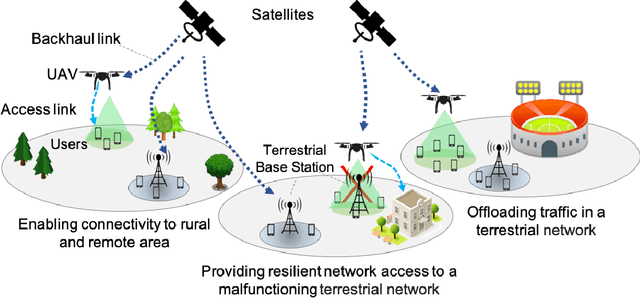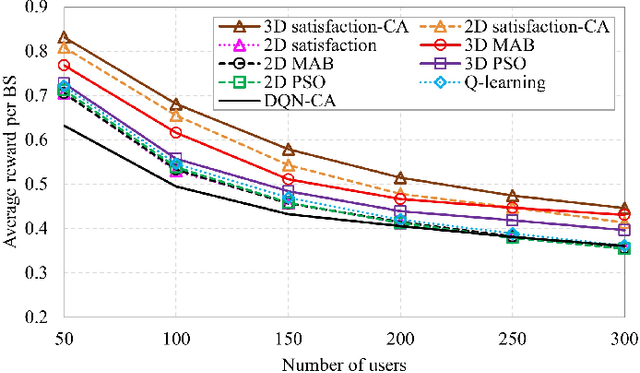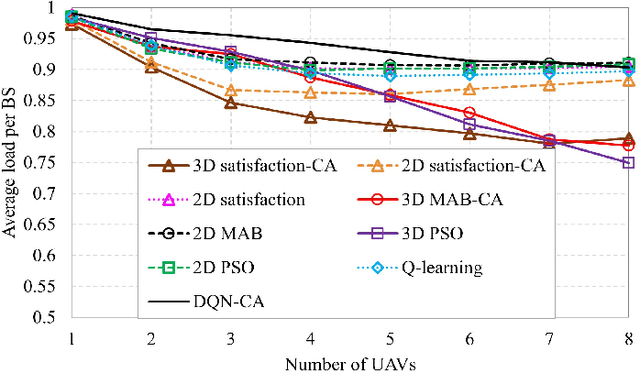Atefeh H. Arani
UAV-Assisted Space-Air-Ground Integrated Networks: A Technical Review of Recent Learning Algorithms
Nov 27, 2022



Abstract:Recent technological advancements in space, air and ground components have made possible a new network paradigm called "space-air-ground integrated network" (SAGIN). Unmanned aerial vehicles (UAVs) play a key role in SAGINs. However, due to UAVs' high dynamics and complexity, the real-world deployment of a SAGIN becomes a major barrier for realizing such SAGINs. Compared to the space and terrestrial components, UAVs are expected to meet performance requirements with high flexibility and dynamics using limited resources. Therefore, employing UAVs in various usage scenarios requires well-designed planning in algorithmic approaches. In this paper, we provide a comprehensive review of recent learning-based algorithmic approaches. We consider possible reward functions and discuss the state-of-the-art algorithms for optimizing the reward functions, including Q-learning, deep Q-learning, multi-armed bandit (MAB), particle swarm optimization (PSO) and satisfaction-based learning algorithms. Unlike other survey papers, we focus on the methodological perspective of the optimization problem, which can be applicable to various UAV-assisted missions on a SAGIN using these algorithms. We simulate users and environments according to real-world scenarios and compare the learning-based and PSO-based methods in terms of throughput, load, fairness, computation time, etc. We also implement and evaluate the 2-dimensional (2D) and 3-dimensional (3D) variations of these algorithms to reflect different deployment cases. Our simulation suggests that the $3$D satisfaction-based learning algorithm outperforms the other approaches for various metrics in most cases. We discuss some open challenges at the end and our findings aim to provide design guidelines for algorithm selections while optimizing the deployment of UAV-assisted SAGINs.
 Add to Chrome
Add to Chrome Add to Firefox
Add to Firefox Add to Edge
Add to Edge